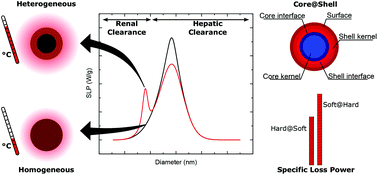Collective dynamical skyrmion excitations in a magnonic crystal.
M. Mruczkiewicz, P. Gruszecki, M. Zelent, and M. Krawczyk
Phys. Rev. B 93, 174429 (2016)
A blog dedicated to recent publications in the field of Nanomagnetism. A selection of links to articles in the most important topics of magnetism of nanoparticles and nanostructures will appear here in a regular basis. Comments and discussion about the results will be welcome.
Tuesday, 31 May 2016
Wednesday, 25 May 2016
Magnetic properties of large Co clusters
Structural and magnetic properties of large cobalt clusters.
Jaime Souto-Casares, Masahiro Sakurai, and James R. Chelikowsky
Phys. Rev. B 93, 174418 (2016)
Jaime Souto-Casares, Masahiro Sakurai, and James R. Chelikowsky
Phys. Rev. B 93, 174418 (2016)
Labels:
Clusters,
Co,
DFT,
Nanoparticles
Monday, 23 May 2016
Rewritable artificial magnetic charge ice
Rewritable artificial magnetic charge ice.
Yong-Lei Wang, Zhi-Li Xiao,Alexey Snezhko, Jing Xu,Leonidas E. Ocola, Ralu Divan,John E. Pearson, George W. Crabtree, Wai-Kwong Kwok
Wednesday, 18 May 2016
Multidomain Skyrmion Lattice
Multidomain Skyrmion Lattice State in Cu2OSeO3.
S. L. Zhang, A. Bauer, D. M. Burn, P. Milde, E. Neuber, L. M. Eng, H. Berger, C. Pfleiderer, G. van der Laan, and T. Hesjedal
Tuesday, 17 May 2016
Bubble and skyrmion crystals
Bubble and skyrmion crystals in frustrated magnets with easy-axis anisotropy.
Satoru Hayami, Shi-Zeng Lin, and Cristian D. BatistaPhys. Rev. B 93, 184413 (2016)
Satoru Hayami, Shi-Zeng Lin, and Cristian D. BatistaPhys. Rev. B 93, 184413 (2016)
Thursday, 12 May 2016
Interplay between anisotropy and EB in films
Interplay between magnetocrystalline anisotropy and exchange bias in epitaxial CoO/Co films.
Hao-Liang Liu, Steven Brems, Yu-Jia Zeng, Kristiaan Temst, André Vantomme and Chris Van Haesendonck
Journal of Physics: Condensed Matter 28, 196002 (2016)
Hao-Liang Liu, Steven Brems, Yu-Jia Zeng, Kristiaan Temst, André Vantomme and Chris Van Haesendonck
Journal of Physics: Condensed Matter 28, 196002 (2016)
Tuesday, 10 May 2016
Surface vacancy mediated pinning in maghemite NP
Surface vacancy mediated pinning of the magnetization in γ−Fe2O3 nanoparticles: A micromagnetic simulation study
Bassel Alkadour, J. I. Mercer, J. P. Whitehead, J. van Lierop, and B. W. Southern
| The energy landscape for a nanoparticle selected at random from the K10
enemble. Each point on the surface of the sphere represents the energy
associated with the alignment of the magnetic moment. The energy is
calculated using a mean field approximation based on the distribution of
surface vacancies and the average angular distribution of the energy
per spins at |
Monday, 9 May 2016
Vortex induced by impurity
Magnetic Vortex Induced by Nonmagnetic Impurity in Frustrated Magnets
Shi-Zeng Lin, Satoru Hayami, and Cristian D. Batista
Phys. Rev. Lett. 116, 187202 (2016)
Shi-Zeng Lin, Satoru Hayami, and Cristian D. Batista
Phys. Rev. Lett. 116, 187202 (2016)
Friday, 6 May 2016
Competition between interactions and anisotropy in NPs
Understanding particle size and distance driven competition of interparticle interactions and effective single-particle anisotropy.
B Pacakova, A Mantlikova, D Niznansky, S Kubickova and J Vejpravova
Journal of Physics: Condensed Matter 28, 206004 (2016)
 |
Comparison of volume dependence of TMAX, representing the blocking temperature of the ensemble of the NPs with size distribution and interparticle interactions;  attributed to blocking temperature of Vm affected by interparticle interactions and finally attributed to blocking temperature of Vm affected by interparticle interactions and finally  , which is the blocking temperature attributed to Vm after decoupling the effect of dipole–dipole interactions and external DC magnetic field , which is the blocking temperature attributed to Vm after decoupling the effect of dipole–dipole interactions and external DC magnetic field  mT (equation (4)). mT (equation (4)).  . Line corresponds to the fit encountering the finite size effect with . Line corresponds to the fit encountering the finite size effect with  Jm−3, Jm−3,  Jm−2. Jm−2. |
Quantum Einstein-de Haas effect
Quantum Einstein-de Haas effect.
Marc Ganzhorn, Svetlana Klyatskaya, Mario Ruben; Wolfgang Wernsdorfer
Nature Communications 7, 11443 (2016)
Marc Ganzhorn, Svetlana Klyatskaya, Mario Ruben; Wolfgang Wernsdorfer
Nature Communications 7, 11443 (2016)
Thursday, 5 May 2016
Particle size-dependent superspin glass behavior in random compacts of monodisperse maghemite nanoparticles - IOPscience
Particle size-dependent superspin glass behavior in random compacts of monodisperse maghemite nanoparticles.
Mikael Svante Andersson, Roland Mathieu, Peter S Normile, Su Seong Lee, Gurvinder Singh, Per Nordblad and Jose Angel De Toro
Materials Research Express 3, 045015 (2016)
Mikael Svante Andersson, Roland Mathieu, Peter S Normile, Su Seong Lee, Gurvinder Singh, Per Nordblad and Jose Angel De Toro
Materials Research Express 3, 045015 (2016)
Monday, 2 May 2016
Mean-field and linear regime approach to magnetic hyperthermia of core–shell nanoparticles: can tiny nanostructures fight cancer? - Nanoscale (RSC Publishing)
Mean-field and linear regime approach to magnetic hyperthermia of core–shell nanoparticles: can tiny nanostructures fight cancer?
Marcus S. Carriao and Andris F. Bakuzis
Nanoscale 8, 8363 (2016)
Marcus S. Carriao and Andris F. Bakuzis
Nanoscale 8, 8363 (2016)
Frustration in colloidal artificial ices
Engineering of frustration in colloidal artificial ices realized on microfeatured grooved lattices.
Antonio Ortiz-Ambriz, Pietro Tierno
Nature Comms. 7, 10575 (2015)
Antonio Ortiz-Ambriz, Pietro Tierno
Nature Comms. 7, 10575 (2015)
Subscribe to:
Posts (Atom)










